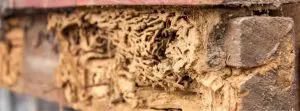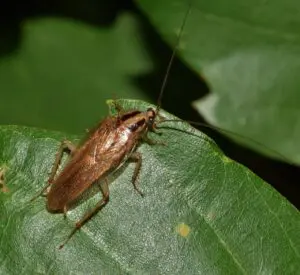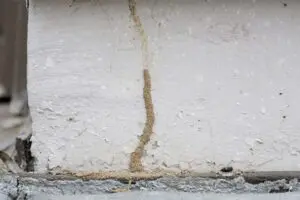
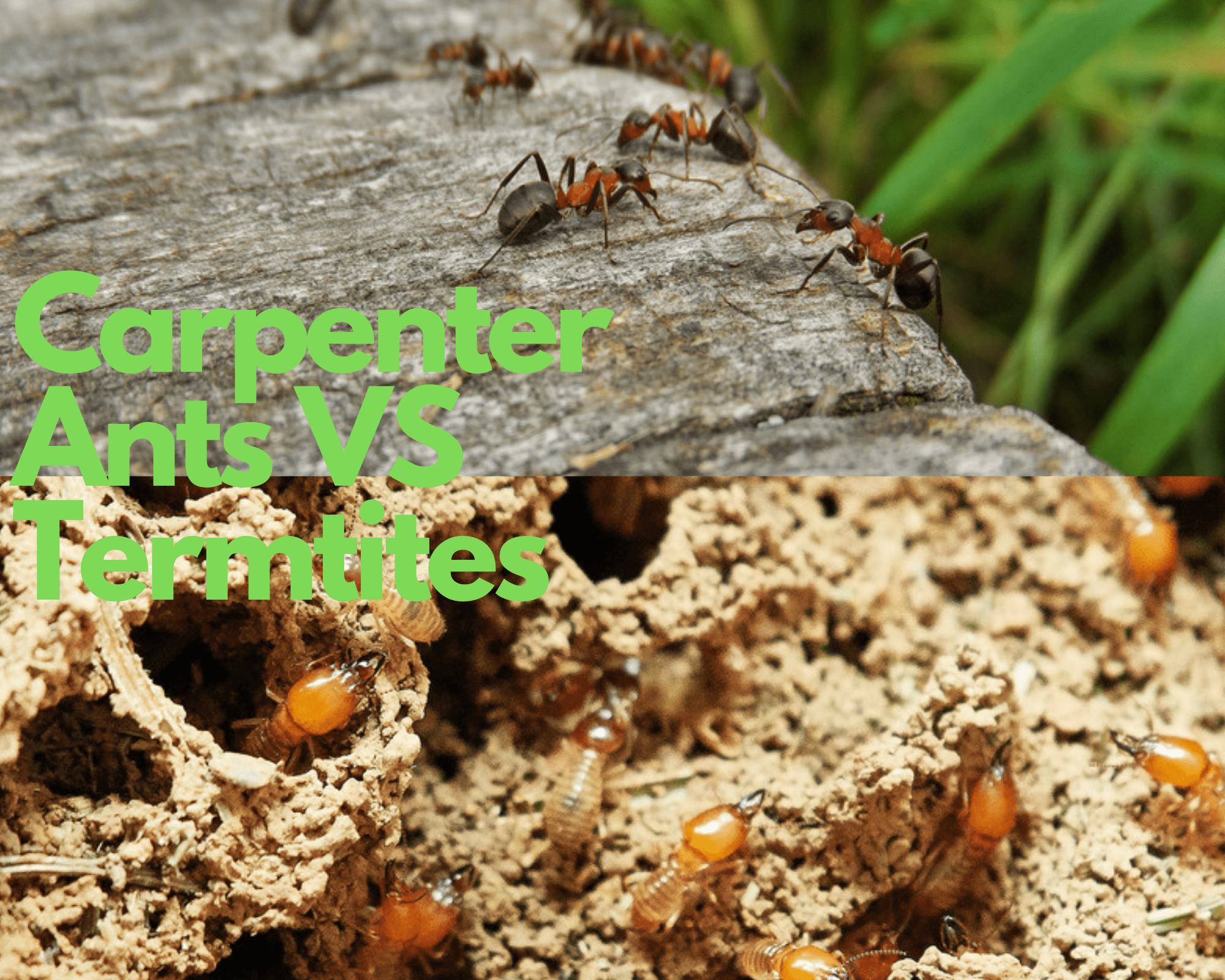
As you get ready to call an exterminator, you realize they’re going to ask, “so what seems to be the problem?” You could just reply that “something’s flying in and out of my woodwork!” or you could sound like a pro with a quick check of four things and tell them exactly what pest you have.
Take a look at these four signs of carpenter ants vs termites and try to match three to ID the pest on your property. When the exterminator gets there, you can see if you were right!
Carpenter Ant vs Termite Damage to Homes
Carpenter ants vs termites can cause significant damage to homes and businesses because they tend to stay hidden. The structural damage they cause can be hard to spot because it is not out in the open. There are some signs, though, that can help identify an infestation.
Carpenter Ants
Structural damage from carpenter ants can be especially difficult to spot. If ants leaving piles of dirt in the house and worker carpenter ants are spotted in an area, there is a good chance that a nest has been established somewhere nearby. Look for wood that appears chipped or scraped, especially in areas where the wood has no reason to be chipped or scraped. Another indicator of structural damage is small holes. Carpenter ants create small holes which they use to dispose of their debris. Look near any sawdust piles for these telltale holes.
Termites
Structural damage from termites can be slightly easier to spot than damage from carpenter ants. It actually looks a lot like water damage in most cases. Walls bulge, ceilings and floors sag, and wallpaper bubbles. Infestations can also cause a smell similar to that of mold or mildew. There are several types of termites in Florida and New Jersey. Different types of termites will give different indicators of structural damage. Subterranean termites create tunnels in order to access above-ground food sources. These tunnels are made from mud, saliva, and feces, and they are found around the foundation of an infested structure. Indicators of a drywood termite infestation may not show up until there is already substantial damage. When this is the case, the veneer cracks, revealing the tunnels underneath.
Physical Differences Between Carpenter Ants and Termites
Identifying carpenter ants vs termites based on physical characteristics can help you determine which pest is causing the problem.
Carpenter Ants
Carpenter ants are larger than termites, with segmented bodies that have a constricted waist. They have bent antennae and strong mandibles used for chewing wood. Worker ants are typically black or dark brown, while some species can have a reddish hue.
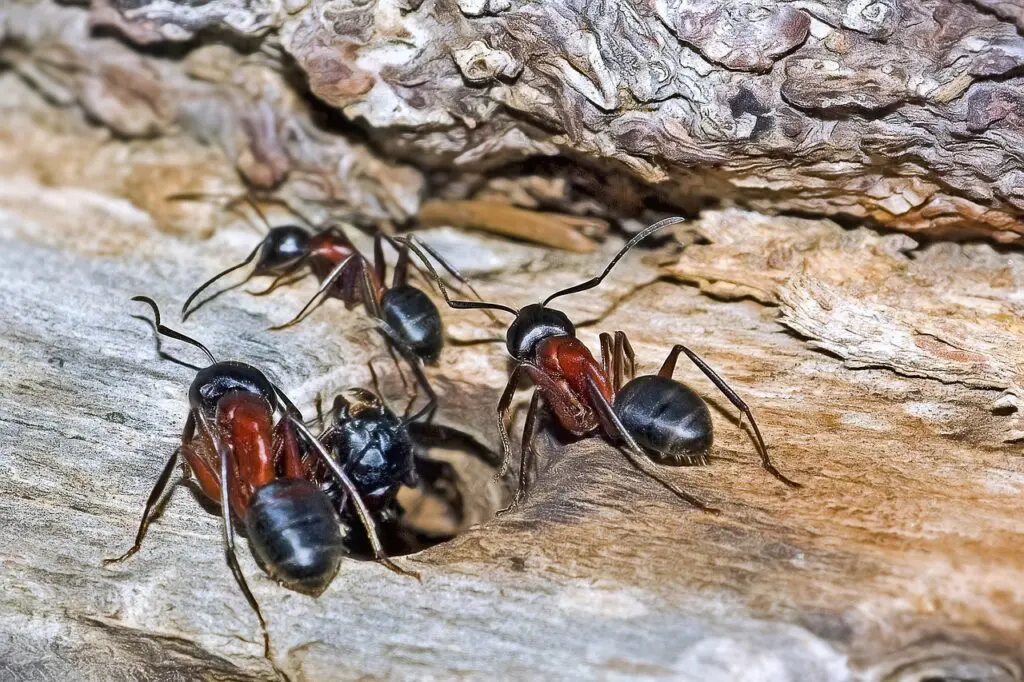
Termites
Termites have a more uniform body shape without the constricted waist. Their antennae are straight, and they have a softer body. Termites are usually pale or light brown, making them look almost translucent.
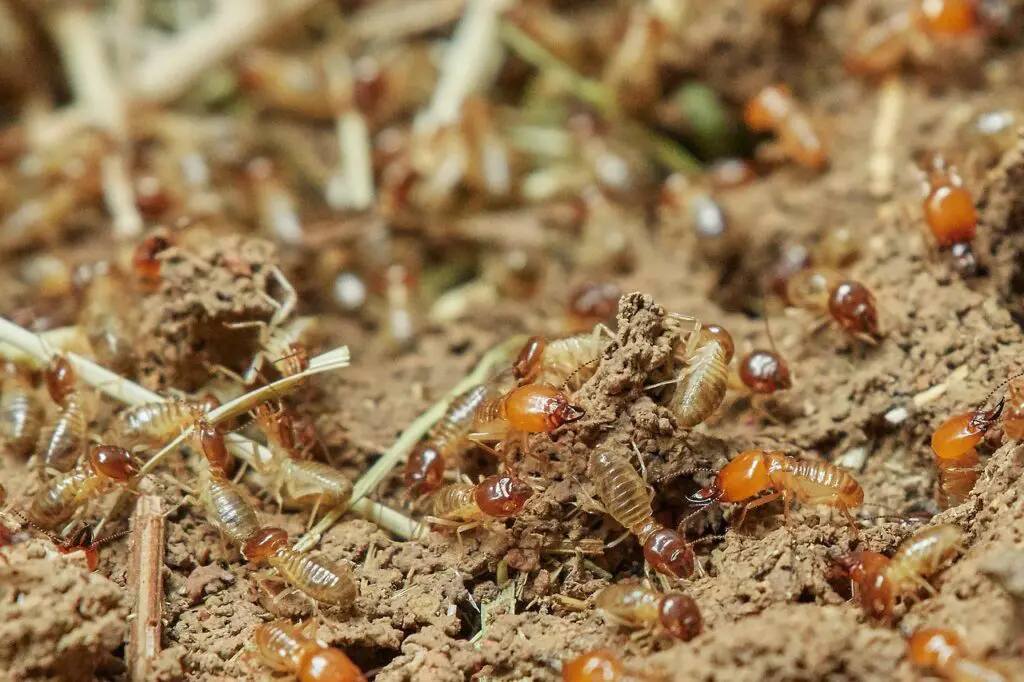
Behavioral Differences Between Carpenter Ants and Termites
Understanding the behaviors of carpenter ants vs termites can provide insight into which pest is present.
Carpenter Ants
Carpenter ants do not consume wood; they chew through it to create nests. This results in termite sawdust piles around their nests, which look like regular sawdust but appear in places where no woodworking has been done. Carpenter ant vs termite droppings also differ, as carpenter ants leave behind wood shavings and debris.
Termites
Termites consume wood, so they do not leave behind sawdust. Instead, they produce frass (excrement), which resembles small pellets. These termite sawdust piles of frass can often be found near their nests.
Carpenter Ant Debris vs Termite Debris
Carpenter ants vs termites both leave behind debris, but the type of debris can help identify the pest.
Carpenter Ants
Carpenter ants leave behind sawdust-like shavings. These carpenter ant vs termite droppings piles of wood shavings are often found near nest entrances or places where the ants have been actively excavating wood.
Termites
Termites leave behind frass, which are tiny, uniformly shaped pellets. These pellets are typically found in piles outside their nests and can be distinguished from carpenter ant debris.
Carpenter Ant Nests vs Termite Nests
The nests of carpenter ants vs termites can look similar but have key differences.
Carpenter Ants
Carpenter ant nests are clean and polished inside. The ants remove all debris from the nest, resulting in smooth galleries. They remove wood in line with the grain, creating thin ribs of wood that separate areas of the nest.
Termites
Subterranean termite nests are made of mud galleries connected by tunnels. These tunnels often extend from the ground up into the structure of a home. Drywood termites build nests directly within wooden structures, lacking the mud tunnels seen with subterranean termites.
Carpenter Ant and Termite Treatments
Treatments for carpenter ants vs termites can vary, but some methods overlap.
Carpenter Ants
Carpenter ant infestations are usually treated with baiting and spraying. Bait stations with poisoned food are placed around the home, which the ants carry back to their colony. Spraying can also be used to kill ants on contact. Foams and dusts are injected directly into the nest to eliminate the colony.
Termites
Termite treatments include barrier treatments, termite baits, and wood treatments. Barrier treatments involve spraying termiticide around the home to create a barrier that termites cannot cross. Termite baits work similarly to carpenter ant baits. Wood treatments involve injecting termiticide into affected areas to kill the colony and prevent future infestations.
Conclusion
Carpenter ants vs termites are two pests that should not be taken lightly. They can cause immense structural damage when left untreated, so it is vital to get any infestations taken care of right away. If you think you may have carpenter ants or termites on your property, call our experts today. At Excel, we know that each situation is different. We will perform a full inspection and customize a treatment program based on your specific needs.
Recognizing the differences between carpenter ant vs termite droppings and identifying termite sawdust piles can significantly aid in early detection and prevention. We treat infestations on your yard and property safely and effectively, so you won’t have to worry about any further damage caused by these costly pests.




